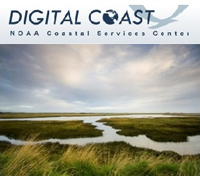Coastal Smart Growth Home: Getting Started: Using Green Infrastructure Assets
GREEN INFRASTRUCTURE ASSETS
Green infrastructure: Green infrastructure is defined by a range of natural and built systems that can occur at the regional, community, and site scales. Coastal communities can use green infrastructure assets, such as wetlands, floodplains, and other natural buffers, to accommodate projected risks from climate change.
How to Get Started
Introducing Green Infrastructure For Coastal Resilience

NOAA's Office for Coastal Management site provides spatial data, models, and examples to help communities identify and prioritize wetlands threatened by sea level rise.
Green Infrastructure Effectiveness Database

This resource allows discovery of literature resources documenting the effectiveness of using green infrastructure to reduce impacts from coastal hazards.
The Value Of Green Infrastructure: A Guide To Recognizing Its Economic, Environmental, And Social Benefits

This resource by the Center for Neighborhood Technology and American Rivers provides a monetary valuation of green infrastructure and explanation of how green infrastructure benefits climate mitigation, air and water quality and other facets.
Model Ordinances To Protect Local Resources: Aquatic Buffers

This section of the EPA Website contains a model ordinance for creating effective aquatic buffers and sample stream buffer ordinances from various parts of the country.
Green Infrastructure Practices and Benefits Matrix
This resource offers a handy overview of nature-based solutions used to lessen community flooding.
Green Infrastructure Protective Services
This video explains the concept of green infrastructure and its coastal storm protection benefits (3-minute video).

